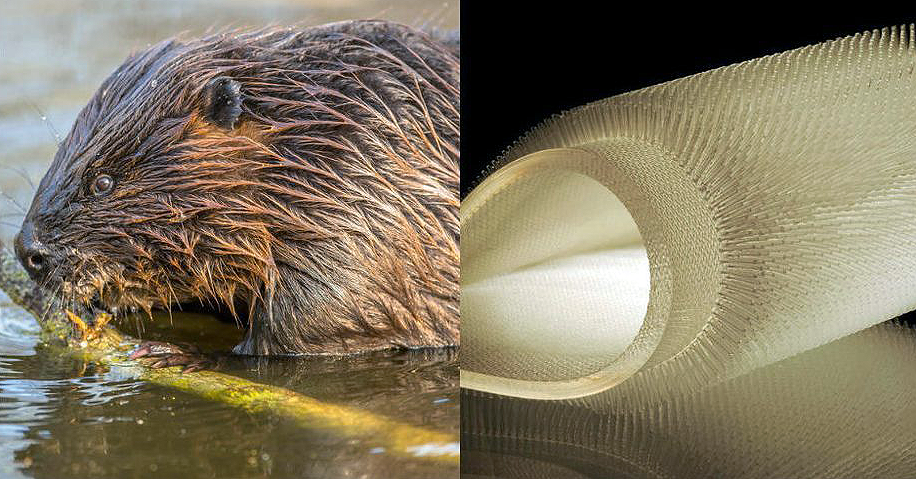With the switch to online learning over the past six months, I’ve been teaching a number of Biomimicry for Beginners classes to people of all ages—from fourth graders to retirees and everyone in between. Beginners have a unique set of needs that an instructor must meet to excite people to learn more about the field without overwhelming them. Below are specific tips and approaches for beginners that will make your classes for them come to life in their imaginations.
Relate biomimicry to what they already know
This tip is a natural one for biomimicry because anyone can walk outside their door and observe something in the natural world that is an entry point. Something as simple as a leaf’s ability to turn sunlight and water into food is as mesmerizing a process as any that humans have been able to create, and it happens right before our eyes every day. This goes for introducing the language and vocabulary of biomimicry as well—remember the term biomimicry in and of itself is likely new and unfamiliar to many people. Finding ways to define the language of biomimicry in relatable and familiar terms is crucial to keeping your audience engaged from the start.
Use visual examples to show and tell
In biomimicry a picture really is worth a thousand words. Even the simplest illustration often helps someone to almost instantly understand what you want to communicate. Is there any doubt that the shape of a flying peregrine falcon (the fastest animal on Earth) inspired the shape of the plane below when you look at the two side-by-side? You barely need any description to explain that biomimicry played a role in this design. Strive to include images that are as intuitive as this one in your presentations and classes.
Get outside
In this age of social distancing, the outdoors is an incredible gift that gives your beginners a way to connect and relate to biomimicry. If you can be with them in-person outside (on a nature walk, for example) with everyone wearing masks that can be a tremendous learning tool that also keeps everyone safe. If you can’t be together in-person, you can ask them to take a walk on their own before the class and share what they find with the group online. For those who can’t get outside for any number of reasons, technology offers us so many online tools to find photographs and video tours of nature that can be equally as powerful. Going outside also reinforces the accessibility of the field and that is key to hooking the interest of beginners.
Give hope
For many people, the current state of the world can sometimes feel hopeless and lead to people feeling helpless. I’ve certainly seen and heard that from my students of all ages. Biomimicry is a hopeful and empowering field. From a personal perspective, my work as a biomimic has helped elevate my spirits even in the darkest of times. We have a critical role to play in advocating for the planet and the protection of other species to preserve them as our teachers and mentors. Biomimicry gives us a way to look to nature as our teacher and guide to solve problems we face in our everyday lives with practical solutions. Learning something new has also been scientifically proven to improve our mental health and emotional wellbeing. In my classes I make sure to clearly communicate this—learning is a tool for self-care. Nothing inspires people like hope: offer it up to your beginning students in generous amounts.
Show biomimicry’s adaptability to any field, interest, and context
One of the things I love most about biomimicry is that anyone, anywhere, in any field can make use of it. My fourth graders could not get over the fact that fungi help trees in a forest communicate with one another underground. Six months later, they’re still talking about the Wood Wide Web! When I taught a group of adult volunteers from the zoos and aquarium in New York City owned and operated by the Wildlife Conservation Society, I related all of my examples to the animals that they would see in the zoos and aquarium. I’ve taught city workers who build affordable housing, medical technology graduate students, and service designers how biomimicry can apply to their professional work. Biomimicry drives a feeling of unity and community—one of the most enduring and powerful lessons from nature. This shows my beginners that we’re all in this together even when our points-of-view and experiences vary widely.
The infectious enthusiasm that beginners find once they realize how approachable biomimicry is inspires me to continue introducing this discipline to anyone and everyone interested in learning from nature. The natural world is as infinite an entity as we have. When you introduce your beginners to biomimicry, you’re opening a whole new window into the world around them. I don’t know any work that’s more satisfying than that.
 Christa Avampato is a writer and the founder of Double or Nothing Media in New York City. She is currently a graduate student in the Biomimicry Program at ASU.
Christa Avampato is a writer and the founder of Double or Nothing Media in New York City. She is currently a graduate student in the Biomimicry Program at ASU.
Twitter: @christanyc | Instagram: @christarosenyc

